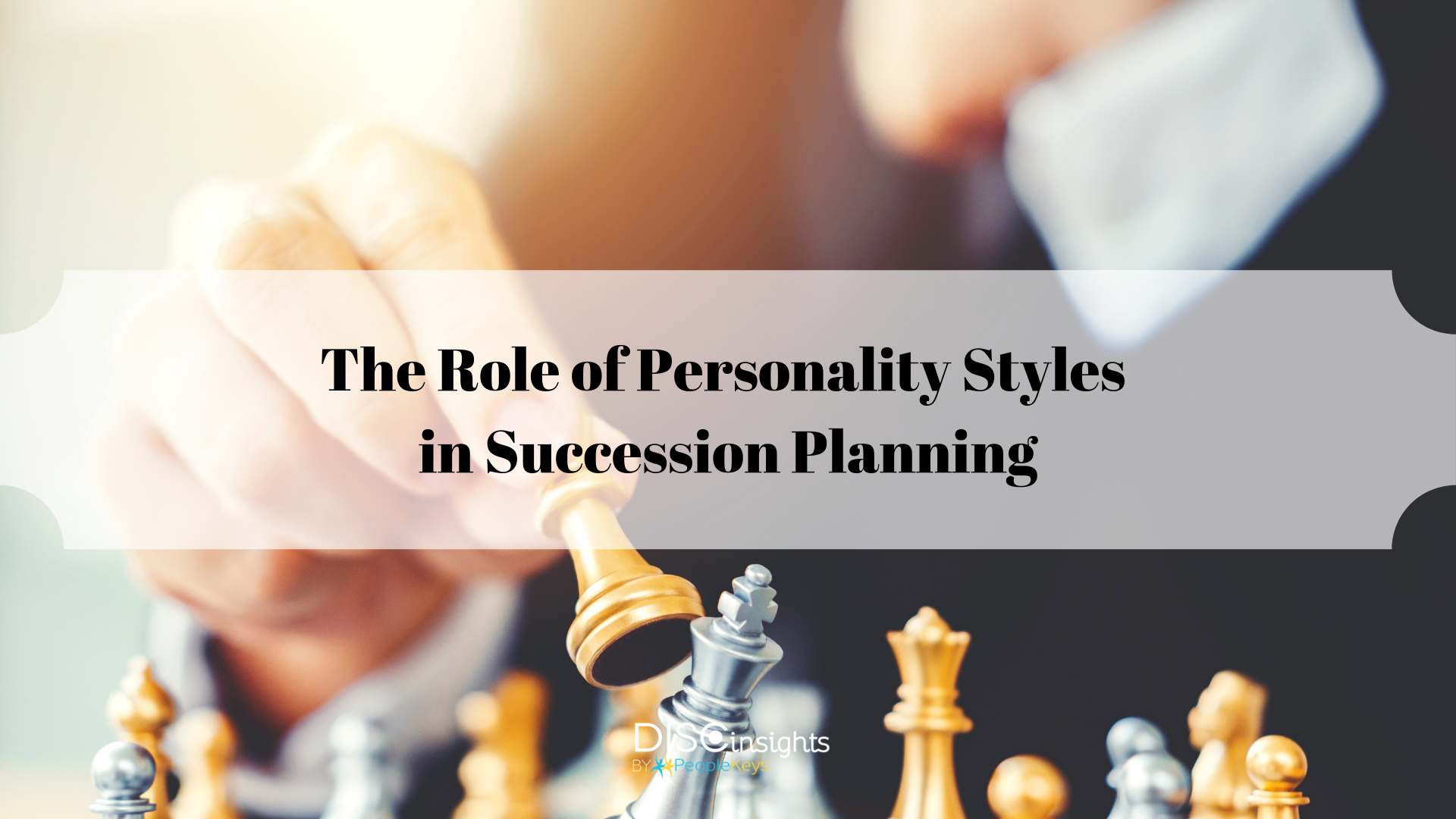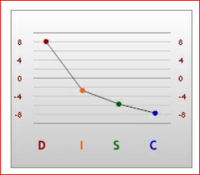- SHOP BY PRODUCT
- DISC TRAINING & CERTIFICATION TOOLS
- DISC RESOURCES
- BLOG
- SHOP BY PRODUCT
- DISC TRAINING & CERTIFICATION TOOLS
- DISC RESOURCES
- BLOG
- ALL ITEMS



When it comes to an organization’s strength, a well-thought-out succession planning process can keep key talent in-house while developing them into the future leaders your business needs to flourish in the long run. Creating the plan itself is a large undertaking, so let’s focus on how you can use the PeopleKeys 4D assessment as part of your plan.
One of the touted benefits of using behavioral assessments, such as PeopleKeys’ 4D report, is that it helps to predict how people will behave over time. The challenge with this view is that it may seem like a life sentence when it comes to our behavior. There is a thin line between predicting and stereotyping when assessing individuals, but does the predictability preclude the changeability or personal growth of someone?
With succession planning, you want the best people in the key positions and you want to develop them in all aspects of the business in order to strengthen their effectiveness. Let’s look at how predictability can work together with the changeable nature of personality to strengthen your succession planning strategy.
Changeability of Primary Style

Ten years ago, I took my first DISC assessment which showed a high “D” style (see on the left). The other 3 styles were relatively weak compared to my “D” score. Fast forward to 5 years ago when I started a food business. I wasn’t thinking about my DISC style at all, but after recently taking a DISC assessment and looking back, I realized my primary style switched from purely strong “D” to one of high “ID” (see on the right).

My Influential (I) style grew because it had to. Being direct and impatient with customers wasn’t going to be helpful to my business. Connecting with them through my enthusiasm and friendliness made it so much easier to sell my product.
I relate my story to you because, in order to implement a succession plan for your organization, using feedback from DISC and other behavioral tools will help within three areas:
The ability of the PeopleKeys 4D report to help predict future performance is helpful when selecting candidates who may be able to fill crucial roles. Creating an ideal profile for each position, which includes the best fitting DISC profile and TEAMS thinking style, as well as the right Values aligned with the company culture and behavioral attitudes, will aid in matching current candidates with future positions. This ideal leadership role profile has to go hand-in-hand with ideal technical and organizational experience, as well as business knowledge. You might find someone who scores high in the latter categories but doesn’t necessarily have the ideal behavioral profile. This is where the changeability factor comes into play.
Another key piece of succession planning is rotating high-potential candidates through various roles to give them the experience they may be lacking. For those who are weaker in the desired behavioral traits, moving them to a role where they almost have no choice but to adapt their style will be a test to see if they can step into leadership roles in the future. This rotation has to be embraced by the candidate, otherwise, if they are not interested, the styles will not adapt. In my example, I wanted to have a food business, so I was motivated to adapt. They should have a similar motivation for the new rotational position.
You may want to have candidates take their DISC assessment again, after a certain amount of time through the rotation. Retaking one’s DISC assessment at least once every two years is a general guideline to observe changes over time and readjust their behavioral action plan. This will show movement of their primary style and can be an anchor for conversations around their future leadership of the company. One of the useful parts of the PeopleKeys 4D report is the graph section that shows the difference in DISC scoring between your “public self” (the mask, the “you” others see) and your “private self” (the core, your instinctive response to pressure). This may be the best view to see how people adapt to their environment.
Your business succession planning is generally an iterative process that has to adjust for staff departures, new additions, performance surprises (both good and bad), and changing external conditions. As you revisit each key role, the associated 4D: DISC, TEAMS, Values, and BAI profiles can feed into the conversation and still be a bedrock tool for development. These aspects of the 4D report, as we discussed in “Why DISC Alone May Not Be Enough,” can shed light on employee fit for future leadership opportunities.
Need help with your succession planning? Contact us for details.

© PeopleKeys. All Rights Reserved
WORKING DAYS/HOURS
Mon - Fri / 8:30AM - 5:00PM EST
